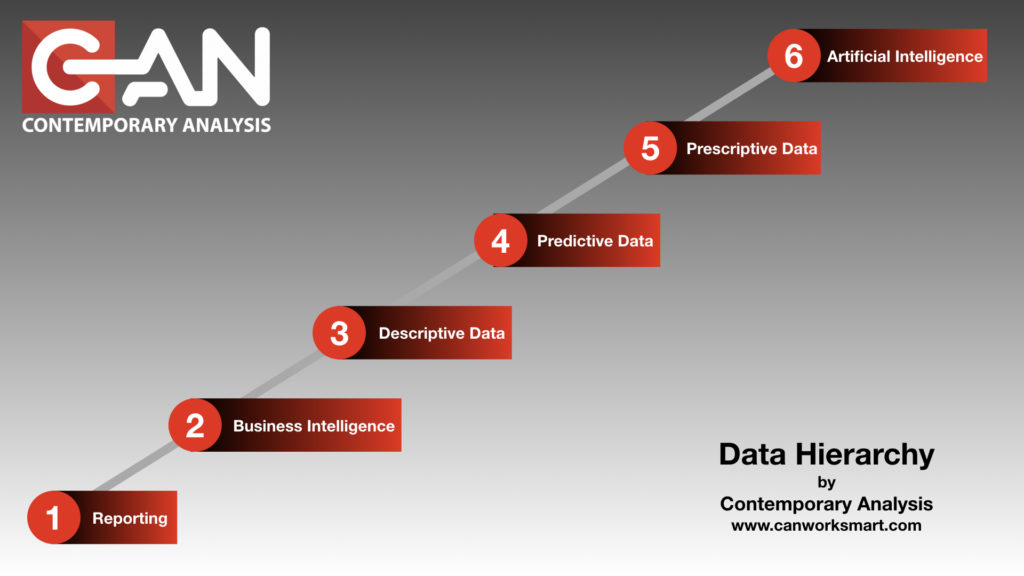
Data Hierarchy Summary
If you’ve gone through all 6 of the levels of Data Hierarchy hopefully you see exactly why it’s important to do these steps. So much of each step is contingent on the previous steps. Poor execution of one step can compound issues down the line.
If you remember in the first part of this series the goal of Data Hierarchy is to see the distant goal. The goal that might even be over the horizon from where you stand today. The codependency of the levels will always be there, but their functions are all dependent on the base data set.

Now for the mind- blowing part of this whole series. …take a deep breath…you may even want to sit down for this. Ready? Yes, the steps are codependent…No, you don’t always have to do them in order.
Think of it like building a house. You have to pour the foundation before you put the shingles on the roof. There’s just no getting around that. But, when you’ve got the framing in the house you can work in one room for a bit and then shift focus if needed.
So when the company who cut your marble countertops, because you’re worth it, was loading them onto the truck and slipped and broke into 1000 pieces. You don’t stop building the house while a new slab is quarried in Italy, you work somewhere else. You can hang cabinets without a countertop, you can tile a bathroom, you can start the landscaping early. All of which move you toward a fully built house without cutting serious corners.
Picking and choosing which sub-project to work on without skipping an essential part of the process is part of the long term plan. The Data Hierarchy is a 6 tier concept. However, in execution this could be 60 smaller projects, it all depends on what you’re trying to accomplish.
This is why it’s important to find someone to help develop your data vision. Someone who has been there before. Executed hundreds of projects, stood up multiple data science teams. Someone who’s website is www.canworksmart.com for example. (Shameless plug!
All joking aside, we are here to help and be with you every step of the way. Contact us today to learn what we can accomplish together.

About Contemporary Analysis (CAN):
Having a third party partner who can hold your hand through this trying process is unbelievably helpful. With most of these levels, it takes 10 people to build it, but only 2 people to run it long term.
Additionally, one of our key roles is to fill in a company as they move through the process is the “Data Visionary” role. This role helps you see over the horizon and provides strategy of that vision. It needs to be an employee at some point, but not at first. These individuals are hard to find and even harder to keep. CAN has the ability to fill this role while the initiative is still new and vulnerable. We have no desire to retain it, however. Our goal is to, at the appropriate time, train an individual and transition all of the IP, the leadership, and the know-how to an internal champion–someone who fits the culture and the design of the particular company. Because, in the end, the hardest part of this whole process is getting the decision makers in an organization to embrace the culture of change.
“We’ve done it this way for X years.” Is becoming the leading indicator of a dying business. If you’re 40 years old the technology available today wasn’t even conceptualized when you were in grade school. “We’ve done it this way for 40 years…” means you’re already behind the curve.
So, how do you start, and when? Now–Yesterday actually. You can’t wait any longer. And with a phone call to us. We want to help. We were built for it.
Quickly jump back to the previous segments using the buttons below.

